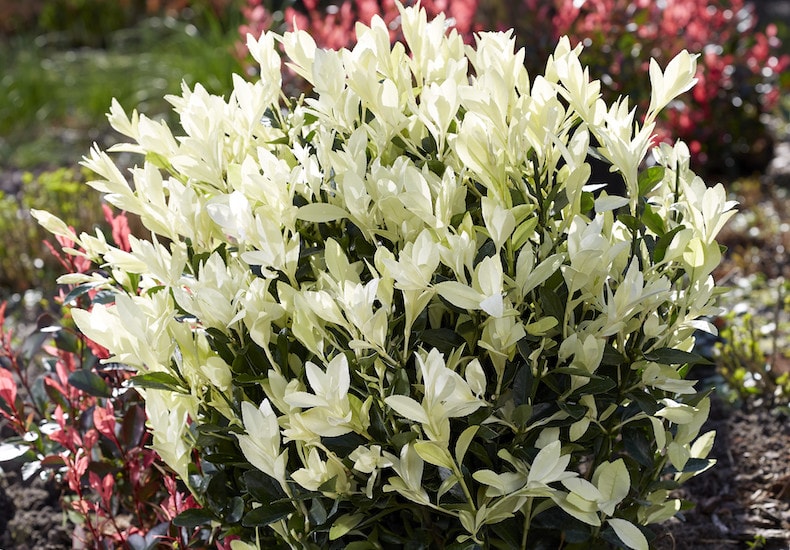Evergreen shrubs play an indispensable role in landscaping, bringing year-round color and texture to gardens, regardless of location.
Among these, dwarf evergreen varieties stand out for their versatility and adaptability, fitting seamlessly into various landscape designs.
Dwarf evergreens, with their compact size, offer an array of options for gardeners and landscape enthusiasts.
These shrubs maintain their vibrant hues throughout the seasons, proving to be a practical choice for any yard.
In this exploration, we delve into the world of dwarf evergreen shrubs, uncovering the diverse range and distinct qualities that make them a gardener’s delight.
Whether you’re looking to enhance your front yard with decorative foliage or seeking a low-maintenance plant that won’t overshadow your home, dwarf evergreens offer a solution.
Join us as we explore some of the best small or dwarf evergreen shrubs, their uses, and the unique benefits they bring to your garden.
Best Small or Dwarf Evergreen Shrubs
Think about planting a small or dwarf evergreen bushes in your front yard as a decorative.
They will make your home more appealing and at the same time will not grow so long that will hide your beautiful house.
Let’s take a look at some of the best small or dwarf evergreen shrubs.
Dwarf Boxwood (Botanical name – Buxus)
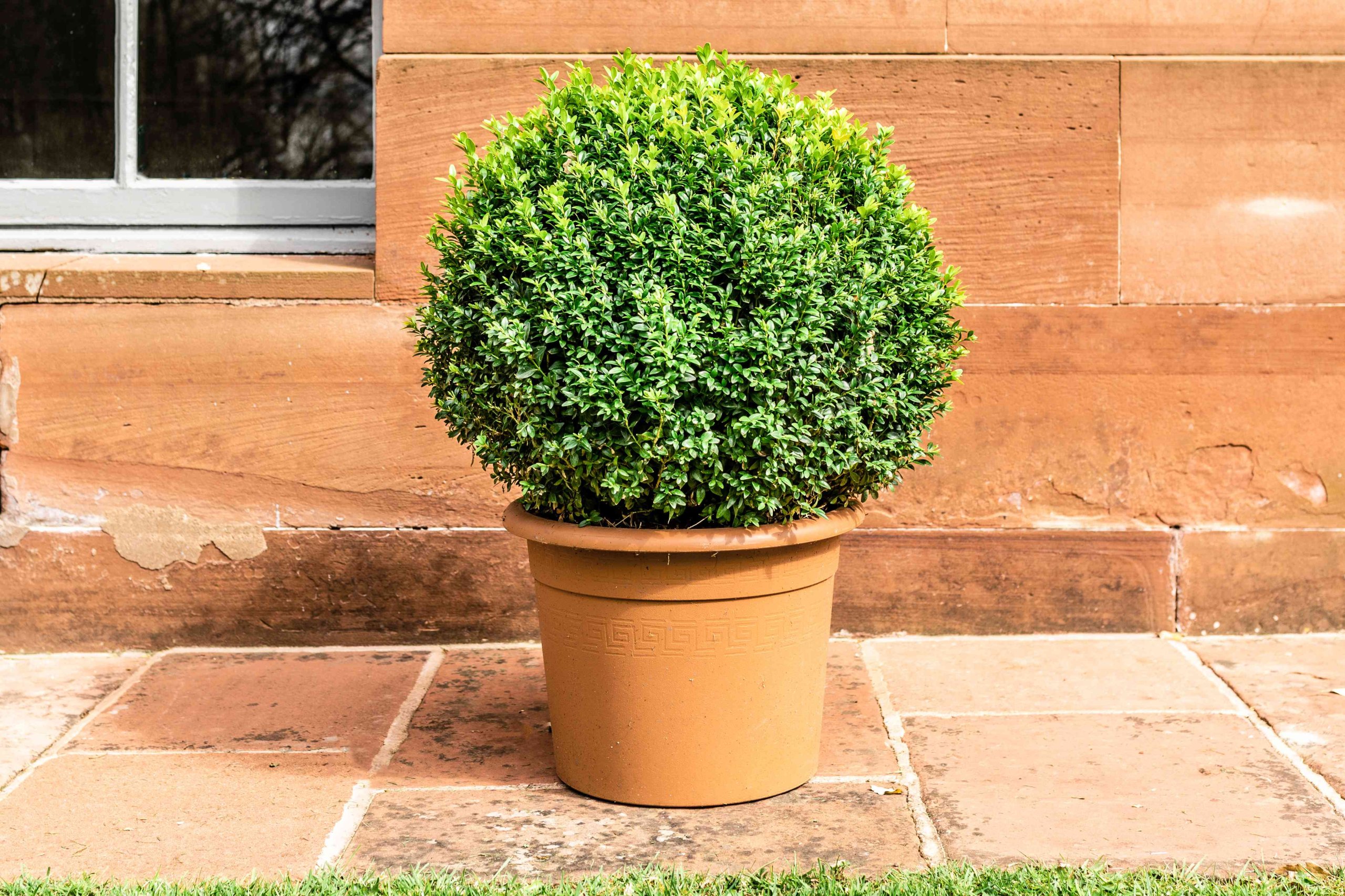
This genus walks in with more than 70 varieties for you. Boxwood is native to Europe, Asia, Africa, Madagascar, South America, and Central America.
Boxwoods are very slow in growth and can merely reach the height of 15m.
Leaves come with a leathery texture designed in opposites, rounded lanceolate.
Uses of Dwarf Boxwood
- Boxwoods are generally cultivated with an objective to create a hedge or to mark a territory of area.
- The wood of this dwarf owns a fine grain and is preferred for wood carving to make storage boxes or some decorative.
- The extremely fine grain is generally used for woodblock printing and woodcut blocks.
Small Juniper Shrub (Botanical name – Juniper)
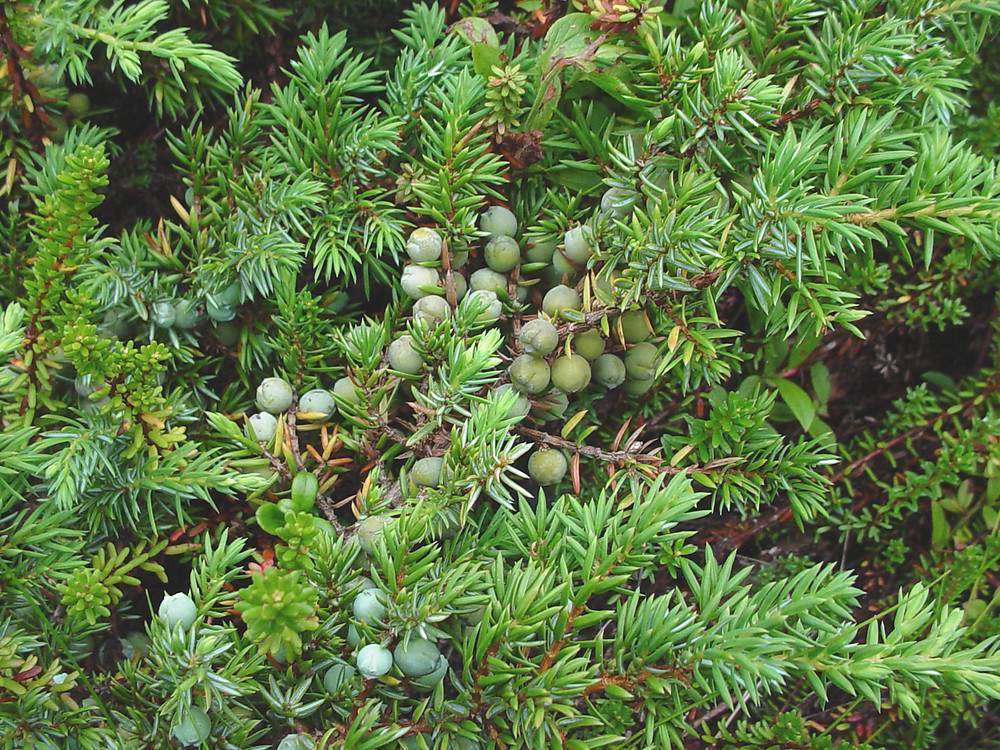
Junipers are categorized under coniferous shrubs that brings in more than 50 types of species with it.
Juniper is native to Africa, Ziarat, Pakistan and arctic hemisphere.
You will find them as columnar or low-spreading shrubs that barely reach the height of 20m to 40m.
Leaves come in the needle-like or scale-like shape which can be either monoecious or dioecious.
Uses of Juniper Shrub
- Some Junipers are given the name cedar because the wood can be used in making red cedar drawers and closets.
- Junipers are widely used in spices and to make distilled wines. The seeds are also used in extracting essential oils that can either be colourless or can be in yellow to pale green colour.
- Local people also use the leaves of this dwarf in remedies for pain or asthma.
Compact Holy Shrub (Botanical name – Ilex Crenata)
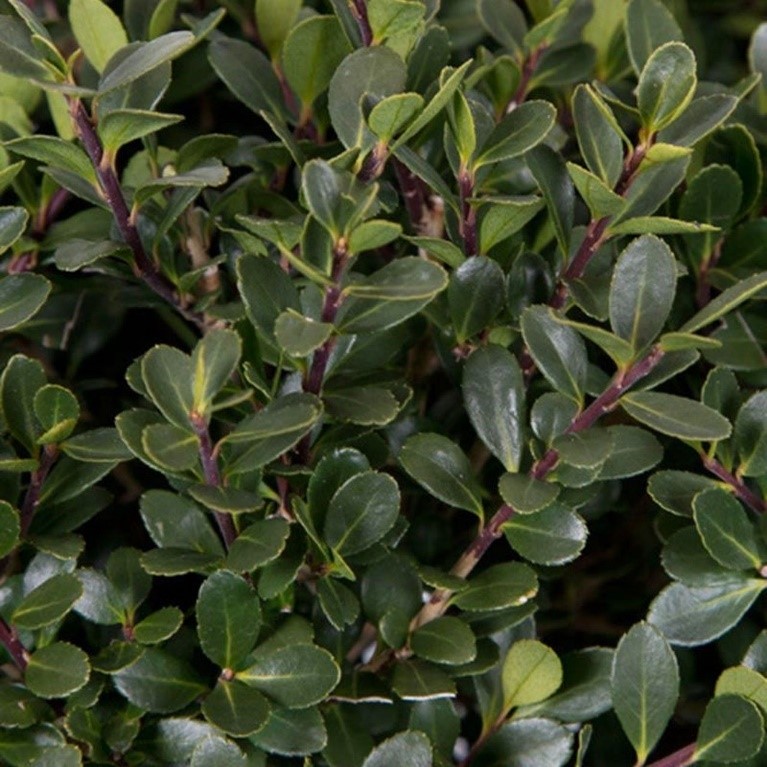
Compact Holy shrub is also known as Japanese holly. It is native to eastern China, Japan, Korea and Taiwan.
This small or dwarf evergreen plant can barely reach the height of 3m to 5m.
Leaves of this shrub comes in with glossy texture and dark emerald colour.
Uses of Compact Holy Shrub
- This is one of the best picks when looking for Bonsai or ornamental plant because of its dense and evergreen foliage.
- Just like boxwood, these plants can also be utilized in creating hedges.
Abrovitae Shrub-like Tree (Botanical name – Thuja)
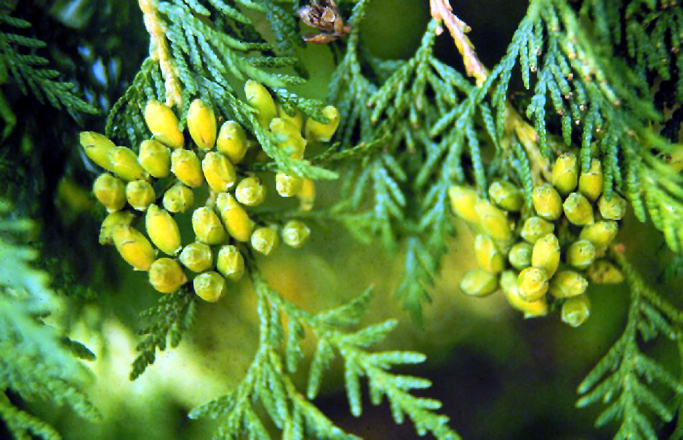
Abrovitaes are coniferous shrub-like trees that brings home 5 more of its species. It is native to northern America and eastern Asia.
These shrubs can grow from 3m to 61m depending up on the species. This is the reason why they are called shrub-like tree.
Stay smart while buying one of these so that you can get a size suitable to you and your landscape.
Leaves come in needle-like shape arranged in alternate pairs of four rows along the twigs.
Uses of Abrovitae Shrubs
- They are extensively used as ornamental trees and to create hedges along the sides. Some may also plant them as privacy trees.
- It has a light and aromatic wood which is used in the making of chests, fence posts a rails and guitar sound boards.
- It is commonly used in creating ointment that can be used for treating warts and ringworms.
Dwarf Rhododendron Bushes (Botanical name – Rhododendron)
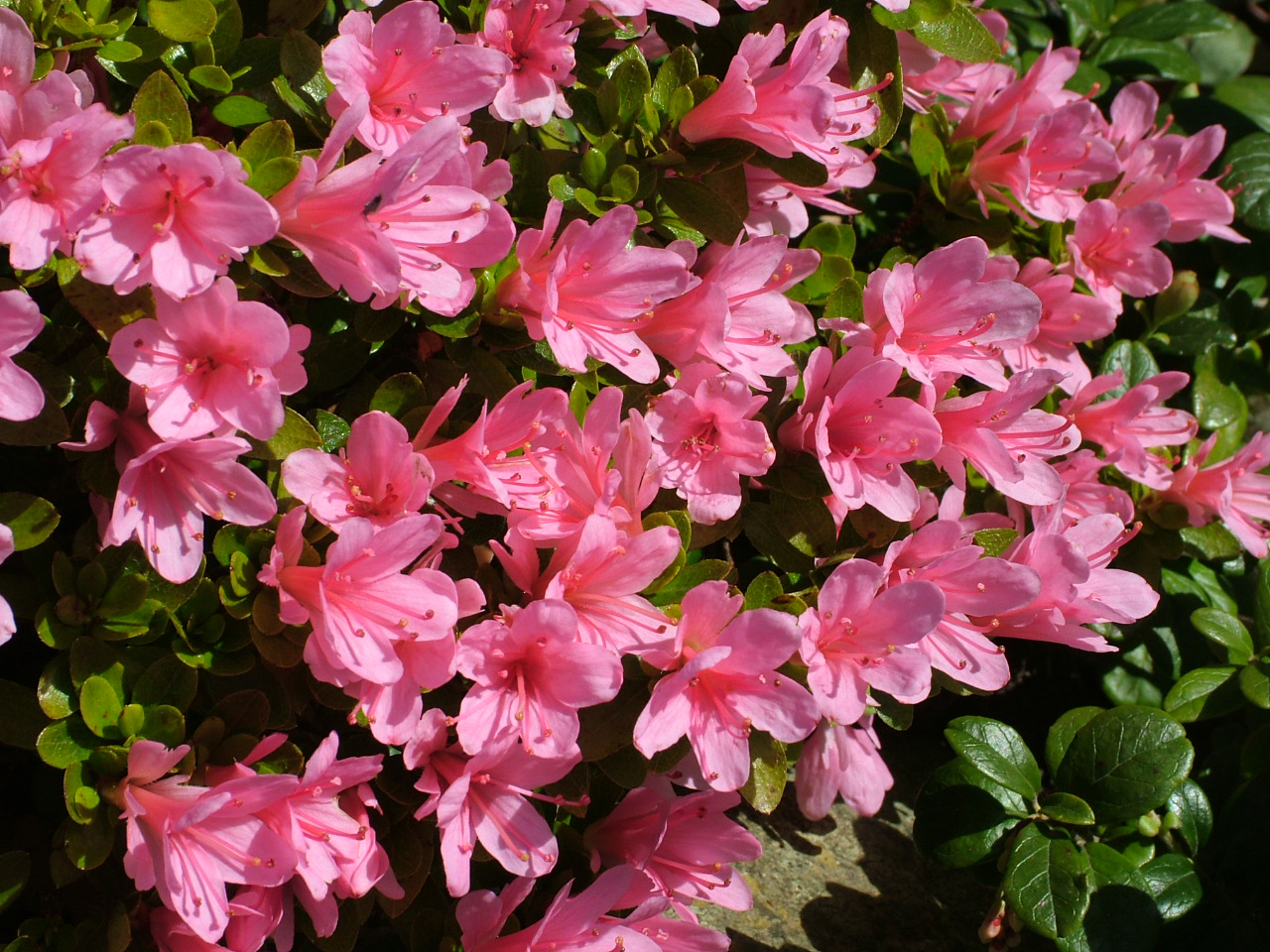
Rhododendron bushes are evergreen dwarfs that brings more than 1000 species with it. It is native to Asia, California and Northeastern United States.
These dwarfs are capable of growing from 100 cm to 30m depending on the particular species.
This dwarf is flowering one and it is recognized as the national flower of Nepal. The leaves tend to grow in a spiral arrangement.
Uses of Rhododendron Shrubs
- Rhododendrons are commonly cultivated for commercial purposes which is now banned in most of the areas.
- In the Indian state of Himachal Pradesh, these flowers are used in the making of popular fruit and flower wine.
Adam’s Needle and Thread (Botanical name – Yucca Filamentosa)
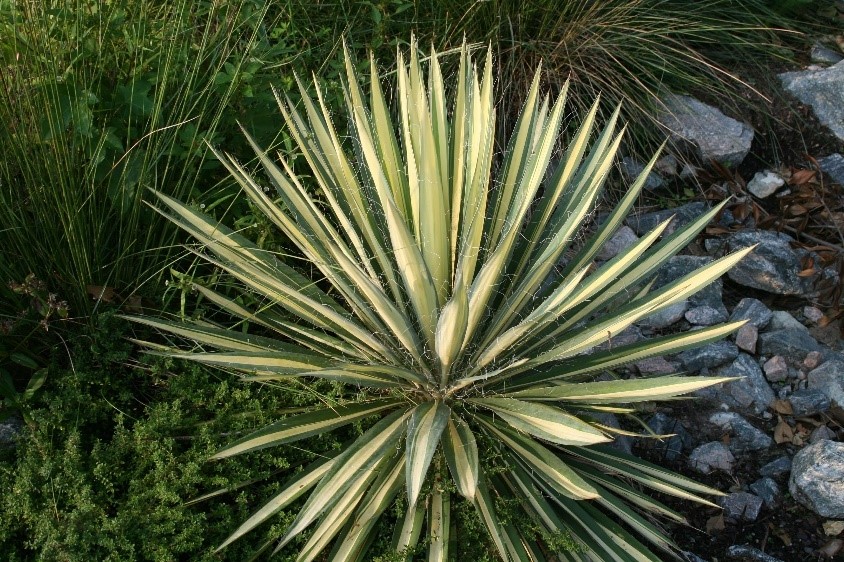
Adam’s needle and thread are also known as Adam’s needle, needle palm, silk grass and spoon leaf yucca.
This shrub is usually trunkless and can be easily distinguished from other yucca species because of its white, thready filaments along the margin of the leaf.
Leaves of this dwarf evergreen shrub comes as a bluish-green strappy leaf.
Uses of Adam’s Needle and Thread
- The fruits can be cooked and consumed once you have removed the seeds.
- Some petals of this shrubs are really large. The large petals can be consumed as a part of salads.
- Other parts of this plant like roots, stems or leaves can be used for stun fish so that they can be collected easily.
Mountain Laurel (Botanical name – Kalmia Latifolia ‘Minuet’)
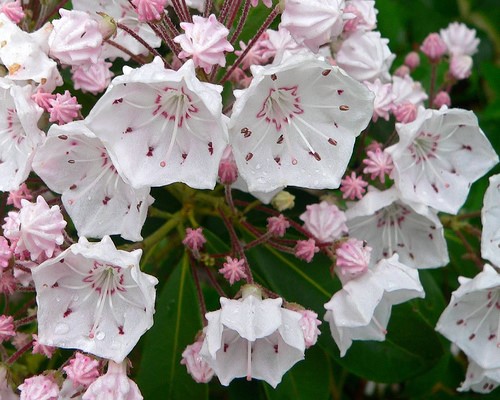
Mountain Laurel is also known as calico-bush and spoonwood. It is native to eastern United states, northern Florida, west to Indiana and Louisiana.
It is a broadleaved evergreen shrub that can grow up to 3 to 9m tall. These shrubs can naturally be found on Rocky Mountains and forest areas.
Uses of Mountain Laurel
- The indigenous people in the southern woodlands of United states uses the infusion of the leaves on the scratches made over the location of pain.
- The infusion made out of leaves can also be utilized in getting rid of pests.
- The wood extracted from this evergreen shrub is also used for carving purposes.
Winter Heath (Botanical name – Erica Carnea)
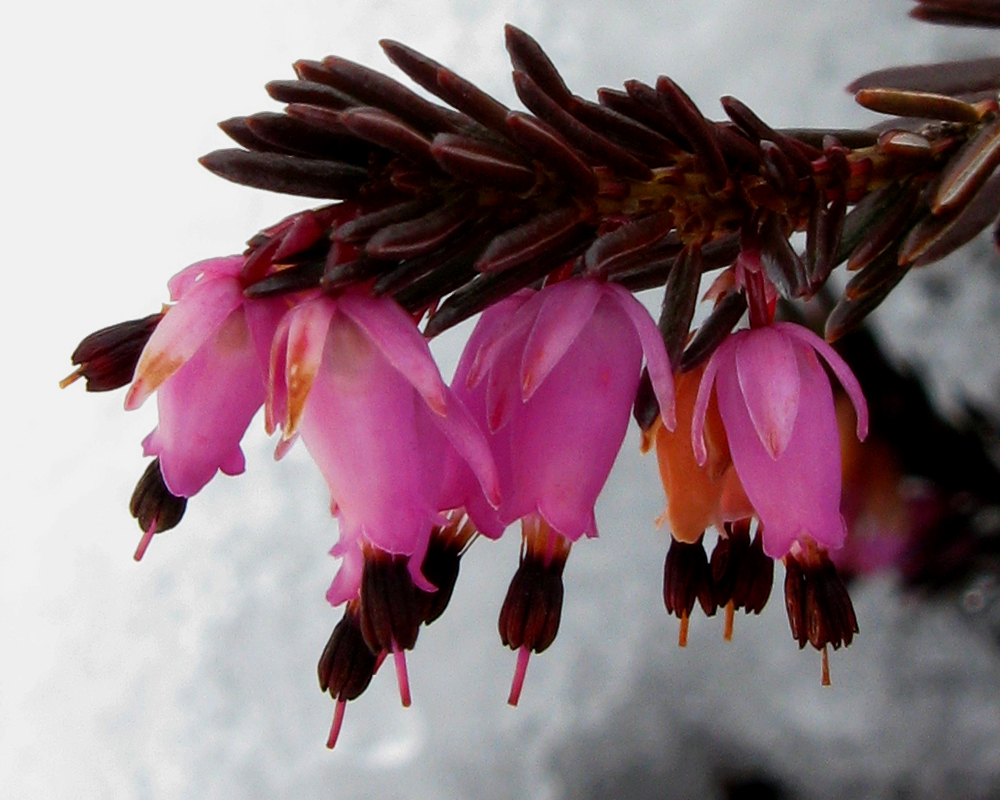
Winter heath is also known as winter-flowering heather, spring heath or alpine heath.
It is a species of flowering plant which is native to central, eastern and southern Europe.
It is a low-growing shrub that has a spreading reach of 10 to 25cm.
The flowers of this shrub are produced in late winters to early spring.
Leaves come in a needle like shape which are 4 to 8 mm long and comes in the concentric circles of four.
Uses of Winter Heath
- The winter flowers are the major attraction of this dwarf shrub and thus it is widely grown as an ornamental plant.
- These shrubs become a little more non maintenance because they are capable of tolerating both mildly alkaline as well as acidic soils.
- It is one of those groundcovers amongst the plantings of other dwarf conifers.
Mahonia (Botanical name – Mahonia Aquifolium)
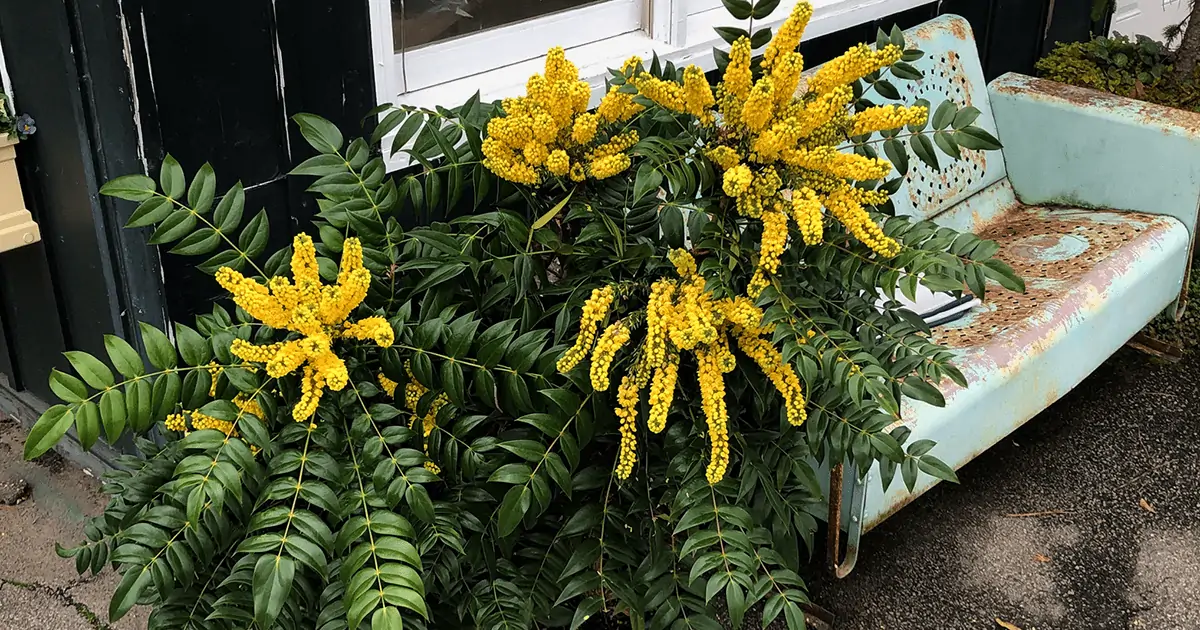
Mahonia is an evergreen shrub that brings more than 70 species with it and is native to eastern Asia, the Himalaya and northern and central America.
The species is popularly known for its evergreen foliage, yellow or sometimes red flowers in autumn and blue-black berries.
The fruits produced by this shrub are very acidic and tends to carry a very sharp flavour.
Leaves of this shrub comes in pinnately compound form with 10 to 50 cm long and 3 to 5 leaflets.
Uses of Mahonia
- The flowers produced by Mahonia are one of the earliest flowers to appear in the growing season.
- Many people plant this shrub to use them as ornamentals.
Yew (Botanical name – Taxus Baccata)
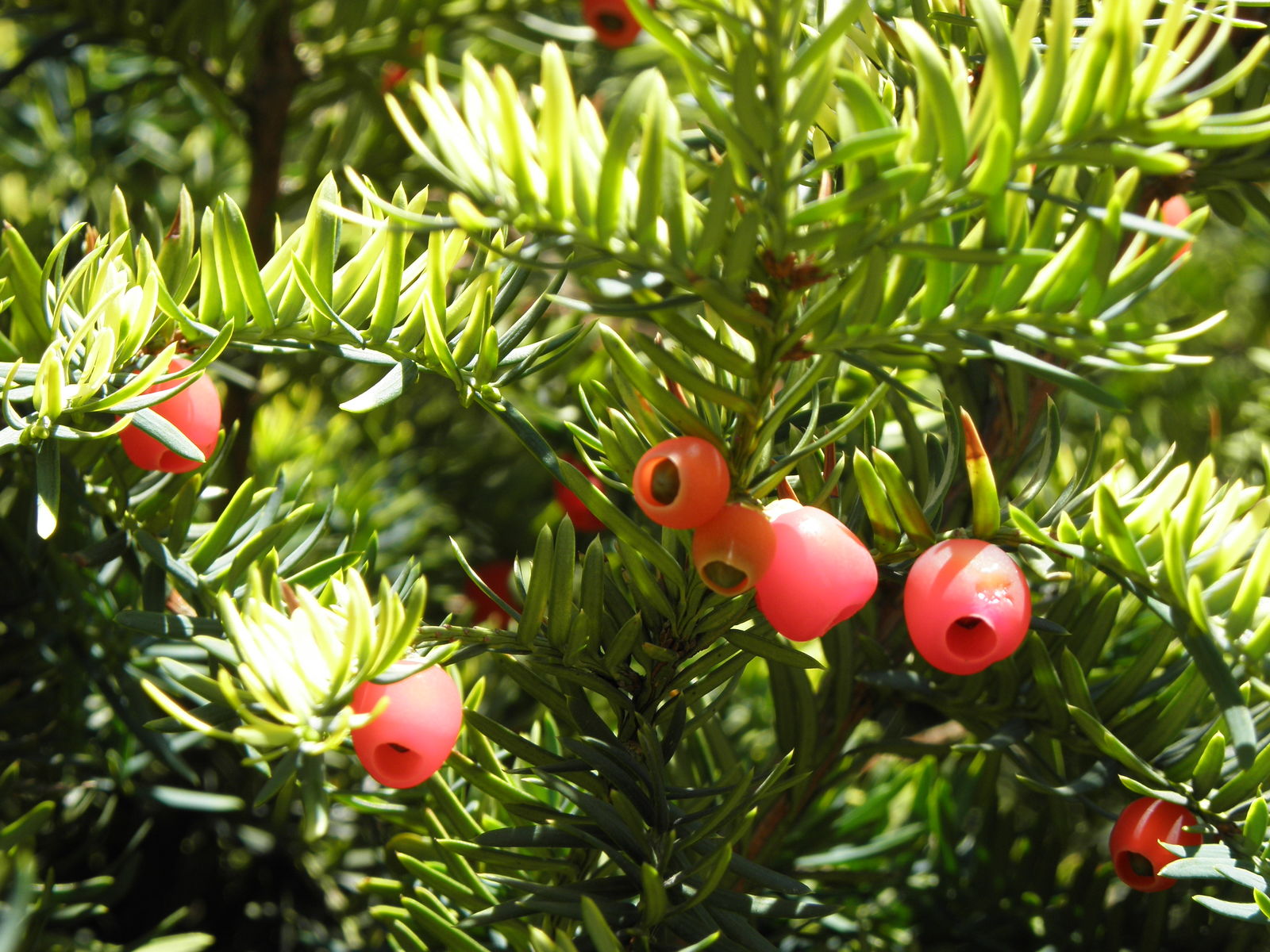
Yew is also known as English Yew, common yew or European yew.
This shrub is native to western, central and southern Europe, Northwest Africa and southwest Asia.
Maximum parts of this plant are poisonous in nature.
The consumption of any such part especially the foliage can result in to the death of a person.
Leaves of this dwarf is flat in nature and is arranged spirally on the stem and the colour is dark green.
Uses of Yew
- The seed cones are modified into red-berry like structure known as arils. Arils are consumed by thrushes, waxwings and other birds after the pollination.
- This small to medium-sized evergreen plant is popularly used as an ornamental.
Mirror Bush (Botanical name – Coprosma repens)
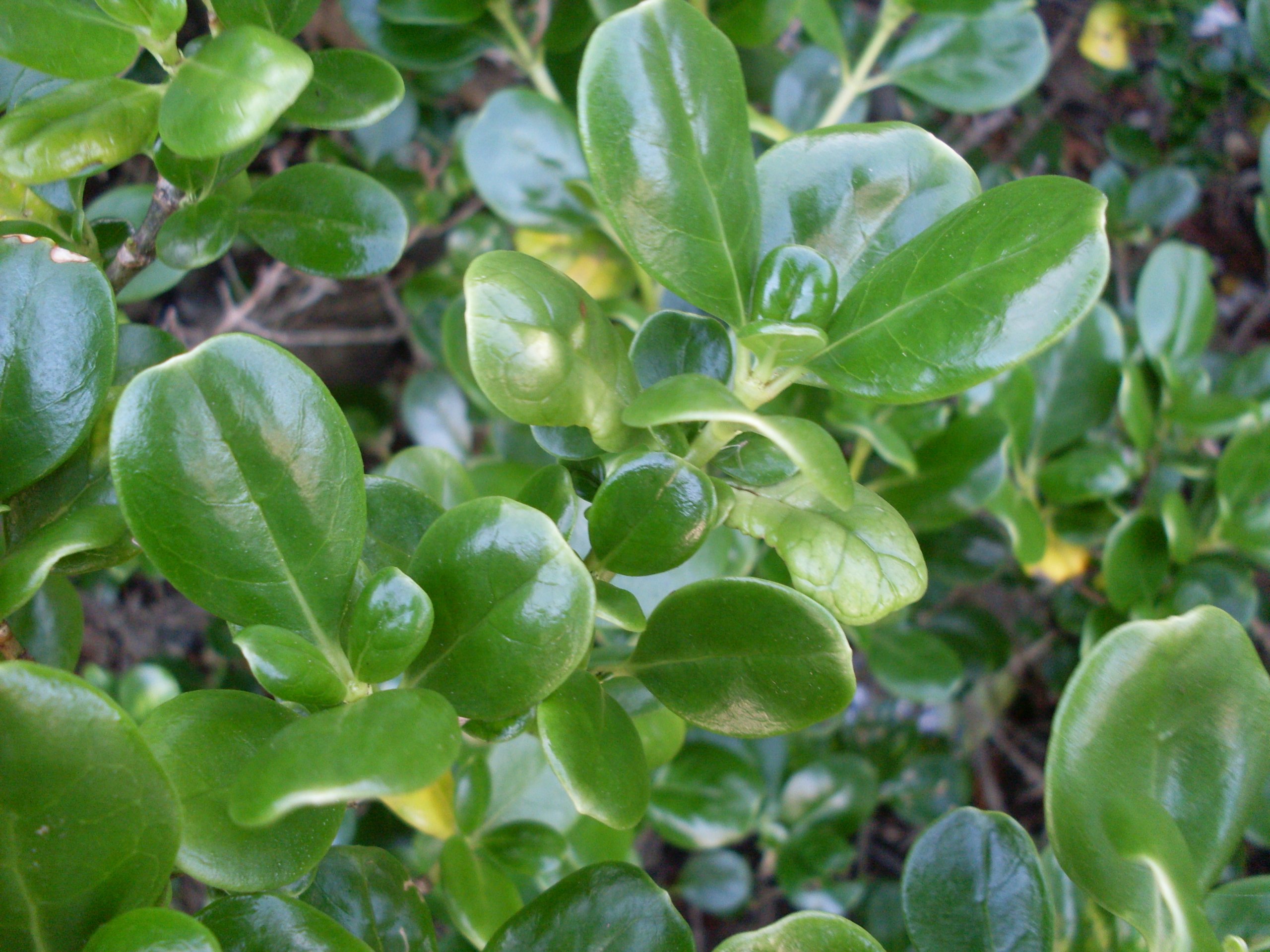
Mirror bush is also known as taupata, tree bedstraw, looking-glass bush, New Zealand laurel and shiny leaf.
It is native to north island, South Island, Kermadec islands and three king’s islands.
This evergreen dwarf has super-glossy leaves in the shades of lime green or sometimes in pinks.
Mirror bush are warm weather babbies and if you want to enjoy them in winters just grow them in containers.
The leaves of mirror bush are very thick and considerable in size depending upon the exposure of external elements.
Uses of Mirror Bush
- The fruits produced by this plant are tasty and of course edible. These fruits are also very rich in vitamin C
- Not only fruits, the seeds are also consumable. The seeds are used in coffee making, which, as it is titled, is extremely delicious.
Small or Dwarf Wintercreeper Shrubs
Wintercreeper is a low maintenance and low-growing evergreen shrubs that tend to grow in a spreading manner.
This dwarf cultivators only grow up to 1 to 2ft. To brighten up your front door or back yard with bright yellow and green foliage keep the shrub under full sun exposure.
Let’s look in to some of the best compact Wintercreeper shrubs –
Emerald n Gold (Botanical name – Euonymus Fortunei)
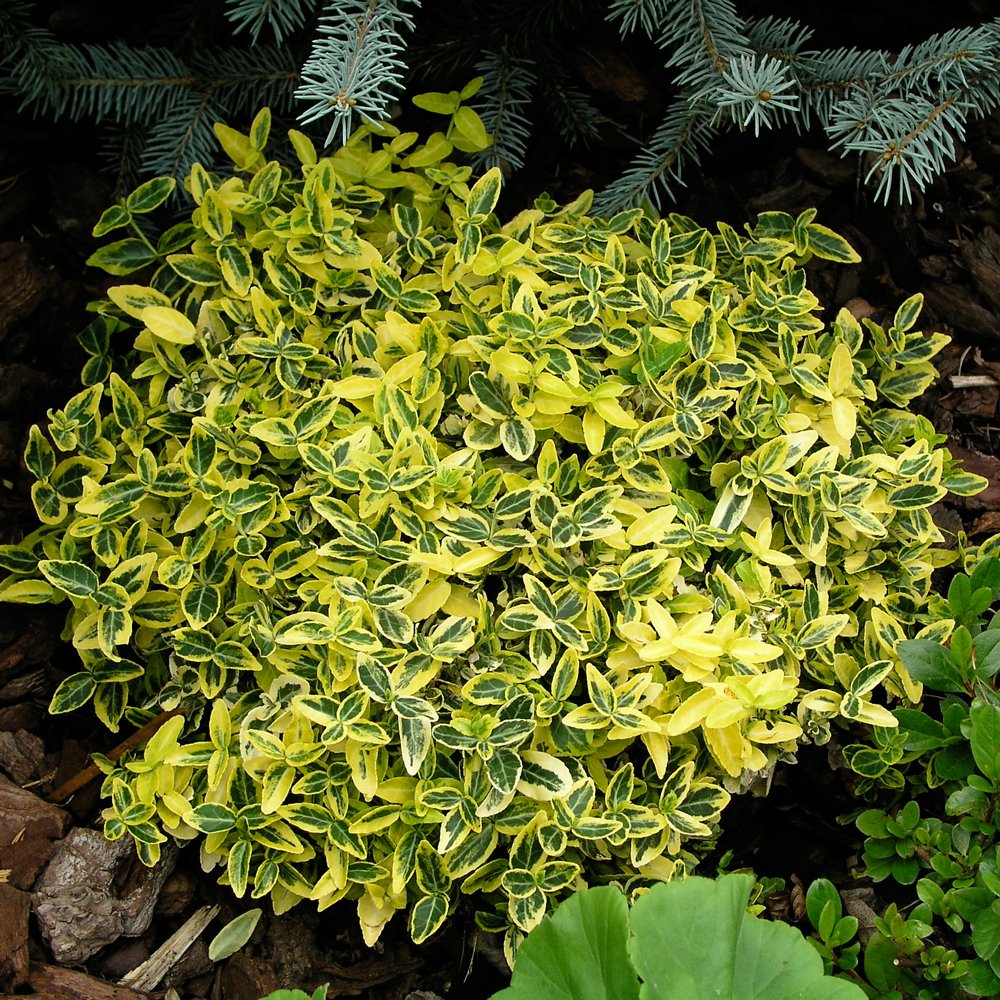
This shrub is categorized under cute shrubs as it can only grow up to 30cm to 60cm.
Full sun exposure and regular watering is all it requires to give the best output.
It has a compact shrub with glossy and ovate leaves. It is named after the broad yellow edges of the leaves.
Emerald Gaiety (Botanical name – Euonymus Fortunei)
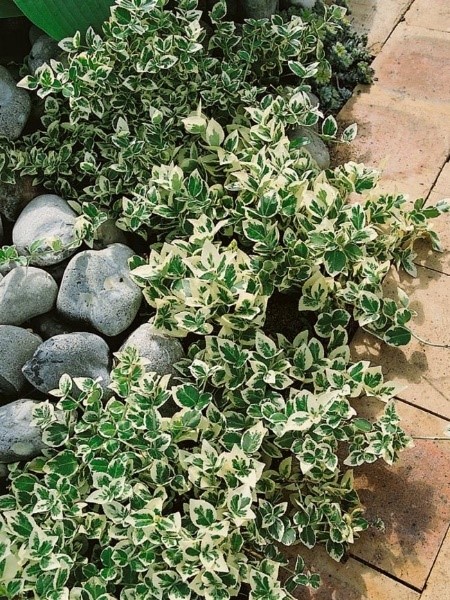
This shrub happens to be bushy and round in shape. It is popularly known for its emerald green leaves that has unique creamy-white edges.
This plant is not very flower friendly but in winters you can notice pinkish hues.
Moonshadow (Botanical name – Euonymus Fortunei)
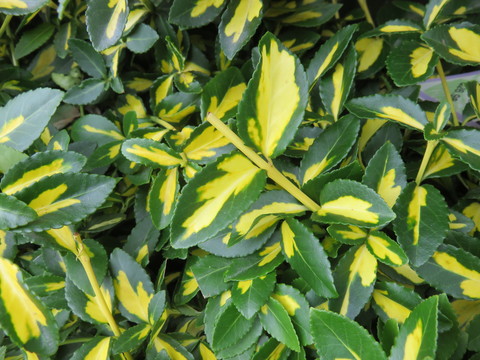
Moonshadow shrub has a round figure with an ornamental foliage.
In the falling season, you will notice that the stems are turning red and foliage is taking on the pink shade.
Therefore, it is advisable to keep your Moonshadow at a point that requires an element of colour or place that needs a bold statement.
Compact Boxwood Shrubs
We have already been introduced to Boxwood species in the start of the article.
Now let’s go ahead and look in to the other important species of Boxwood shrubs.
Green Gem (Botanical name – Buxus)
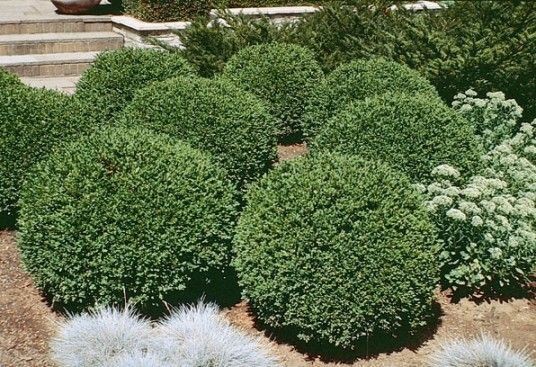
Green gem is a tiny landscaping shrub that has a round growth with ovel-shaped leaves.
The dense growth of Green gem makes it an excellent choice for creating low hedges. They can barely grow up to 3ft to 4ft tall.
Green Pillow Compact (Botanical name – Buxus Microphylla)
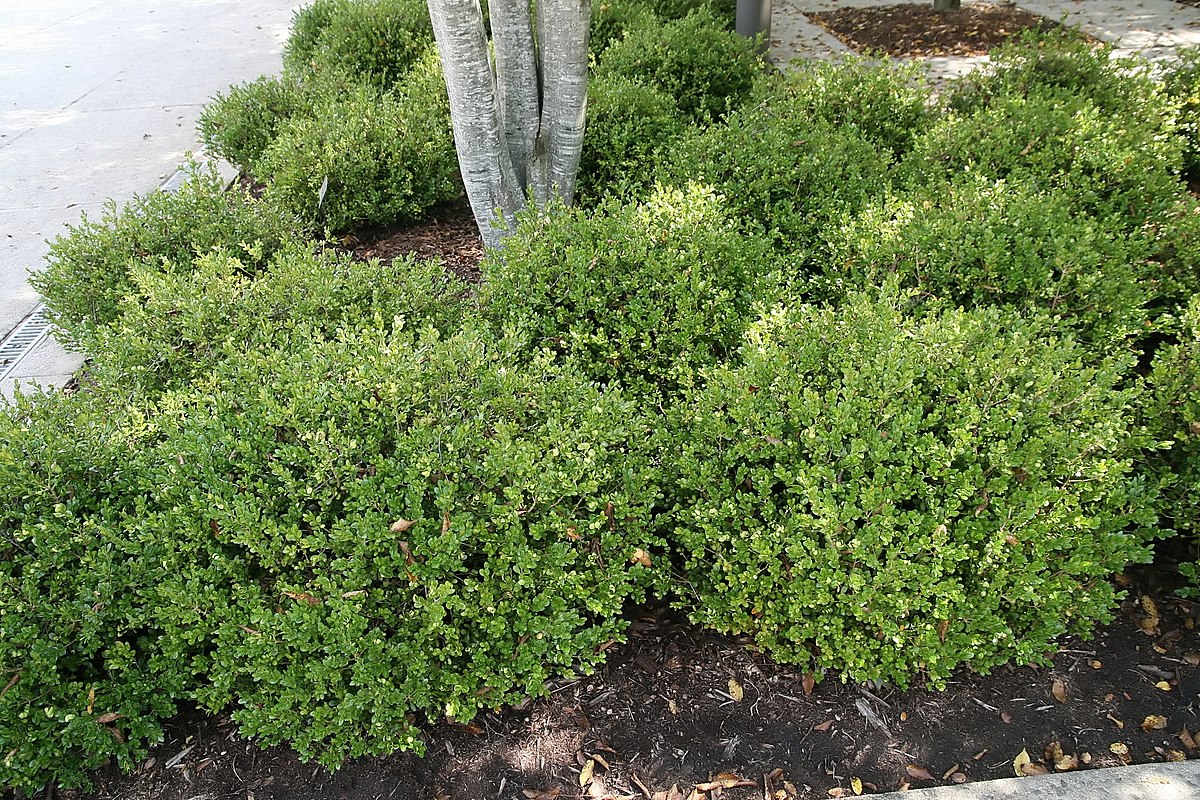
Green pillow compact shrub stays true to its name. This low-growing shrub has a broad base for leaves with a very mushy foliage.
Initially the colour of leaves is light green but as winter arrives, it turns in to bronze colour.
Suffruticosa (Botanical name – Buxus Sempervirens)
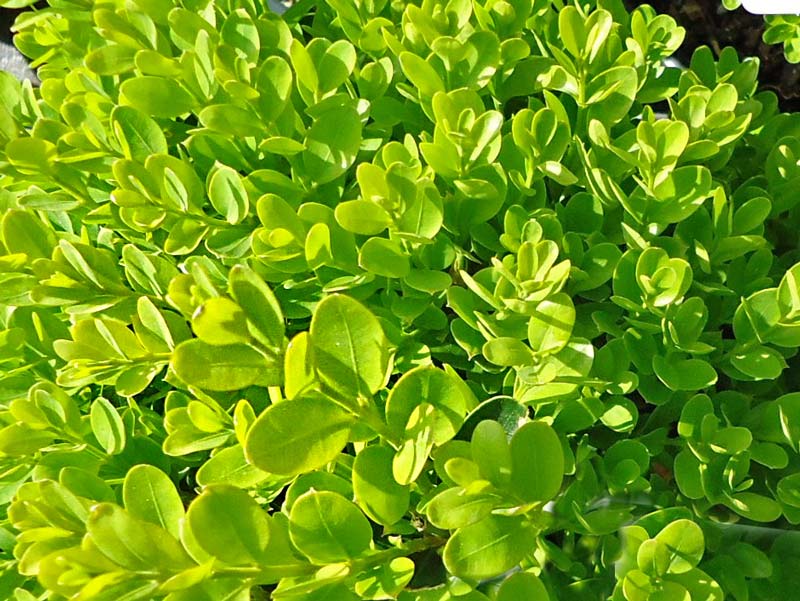
Suffruticosa is a tiny little boxwood shrub that has oval-shaped leaves and a dark lush green foliage.
This shrub can barely grow up to 1m and therefore is a great choice for creating short privacy hedges.
What makes them an ideal choice is that they are low-maintenance. They require pruning only once a year.
Green Mountain (Botanical name – Buxus x)

Green mountains are dwarf hedge plants that come with a cute conical shape and what makes it even better is when you grow them in appropriate containers.
If not in the containers, you can plant them to border your gardens.
This will uplift the look of your property in overall sense.
Dwarf Spruce Shrubs
Dwarf spruce shrubs are compact and evergreen conifers that are a popular choice for gardens.
They are delicate and tend to have needle-like foliage. The foliage can either be dark green or bluish green depending upon the type of cultivator.
Spruce shrubs tend to have upright growth and the dense foliage makes them an outstanding choice for evergreen hedges and foundation planting.
Let’s take a look around some of the best small spruce shrubs.
Dwarf Norway Spruce (Botanical name – Picea Abies ‘Pumila’)
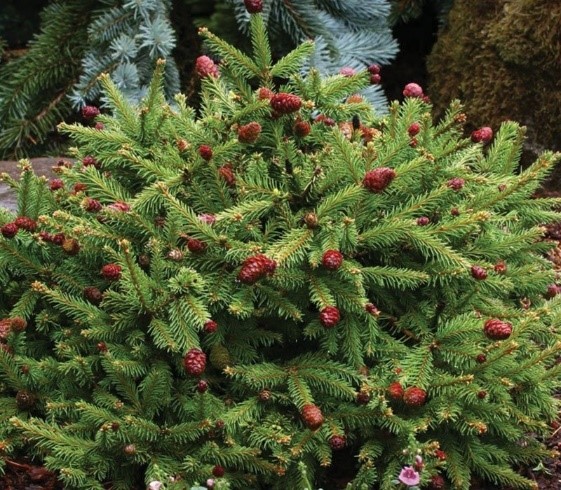
This Norway spruce is flat from the top and grows into a circular pattern.
These Dwarfs are extremely attractive because of their light green color and highly dense foliage.
The lower branches grow in an outward manner while the upper branches grow upward.
Glauca Globosa (Botanical name – Picea Pungens)
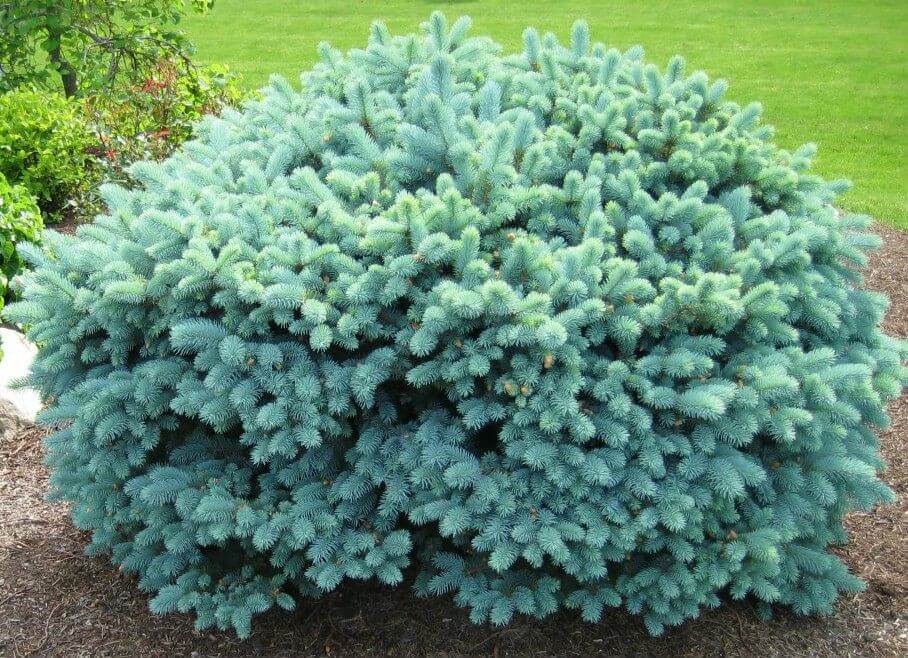
Miniature-sized pictures of this spruce show that they are roundly shaped blue-needled spruce. This dwarf is slow-growing in nature but will eventually reach a height of 3ft to 4ft.
Dwarf Alberta Spruce (Picea Glauca ‘Conica’)
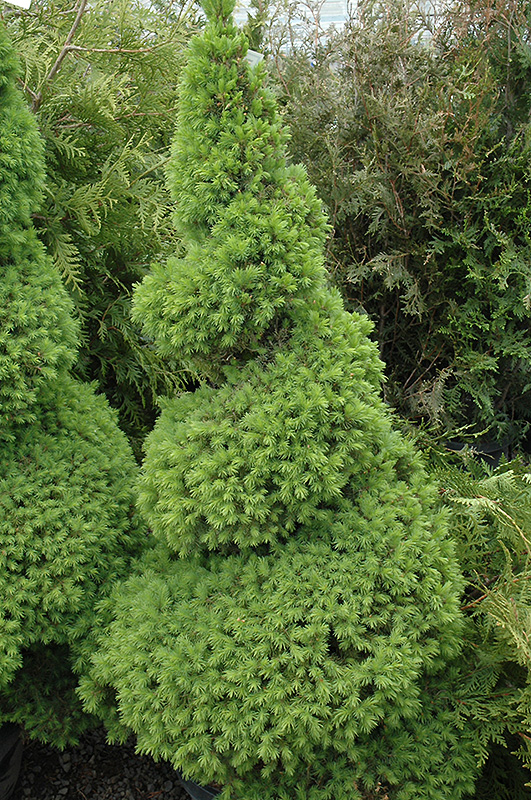
Alberta spruce is another evergreen plant that is shaped like a pyramid blessed with light green color and dense foliage.
You can either choose to plant them in a sunny area or you can prune them into ornamental to boost the appeal of your front yard.
Little Gem (Botanical name – Picea Abies)
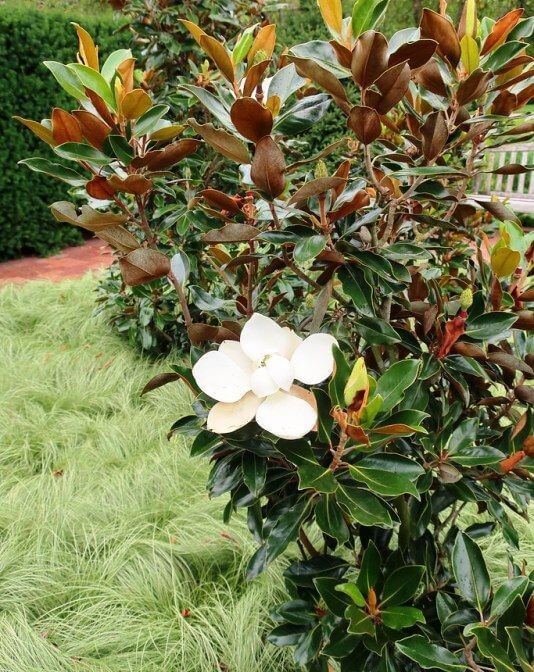
This compact shrub is an evergreen dwarf with needle-like roundly shaped dense foliage.
This can be a great fit in your rock garden or you can also place it in front of all the other big trees. In short, give it a spot where it can stand out.
Compact Junipers
We already know enough about the Junipers. So, let’s go ahead and explore on the species that belong to the Juniper genus.
Juniper ‘Blue Star’ (Botanical name – Junipers Squamata ‘Blue Star’)
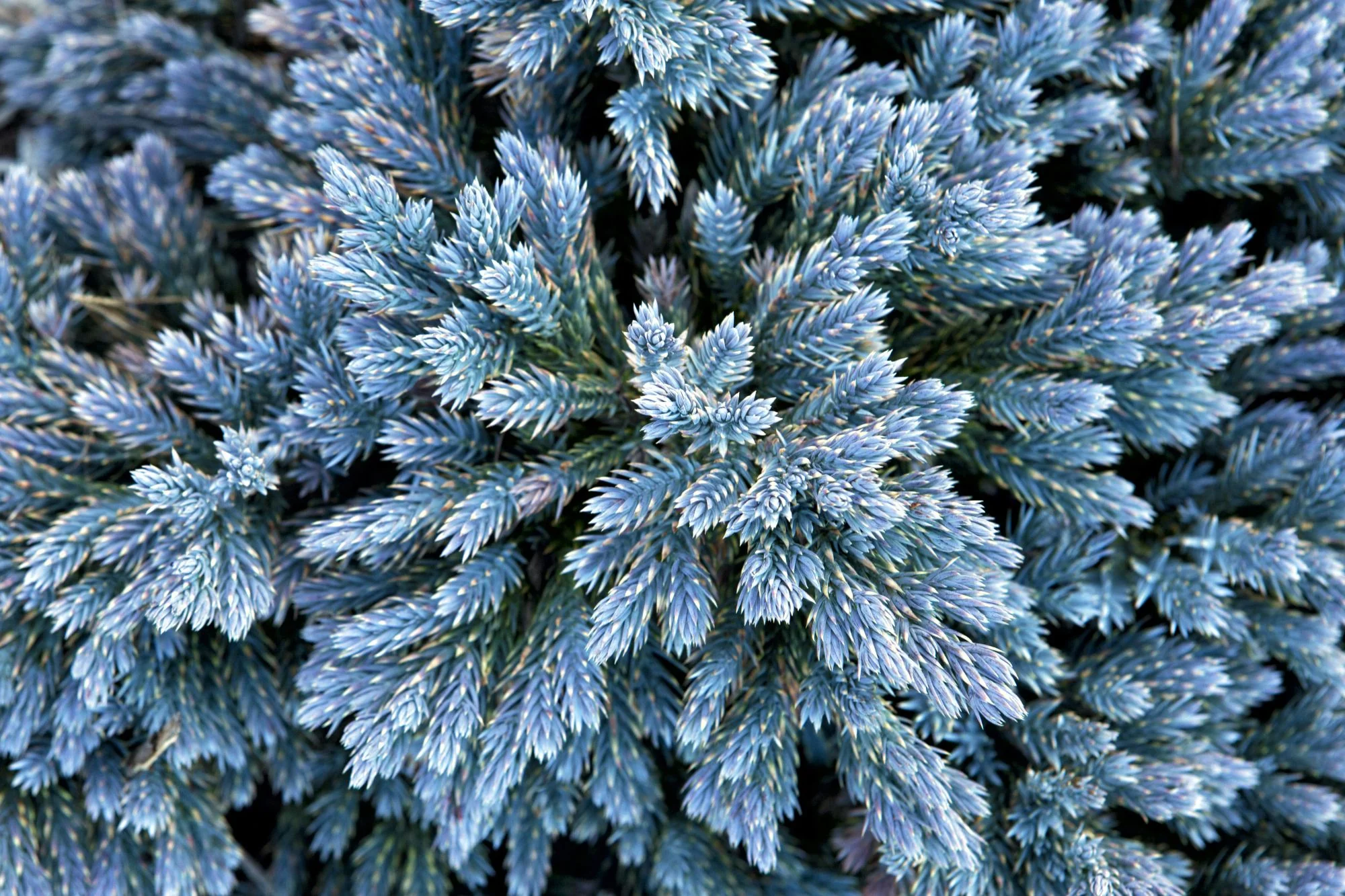
Juniper blue star is also known by the name ‘Flaky Juniper’. This shrub is known for its blue color and thus makes an amazing fit for garden landscapes.
It can barely grow up to 1m to 2m. Another thing about this shrub is that it is not only small but also sun-loving and non-maintenance.
Dwarf Japanese Garden Juniper (Botanical name – Juniperus Procumbens ‘Nana’)
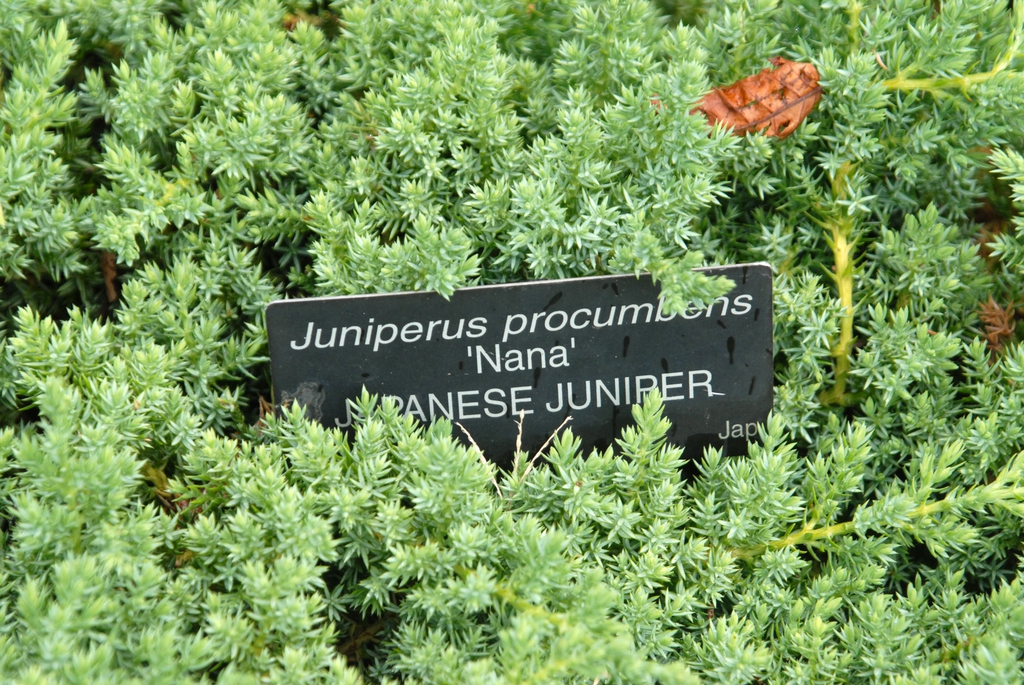
Dwarf Japanese garden juniper is a conifer shrub with spiky bluish-green needles. It is habitual to low growth which is also indicated in its name ‘nana’.
This juniper is a spreading plant, which means it will help you in avoiding the growth of weeds in your garden.
Juniperus communis (Botanical name – ‘Compressa’)
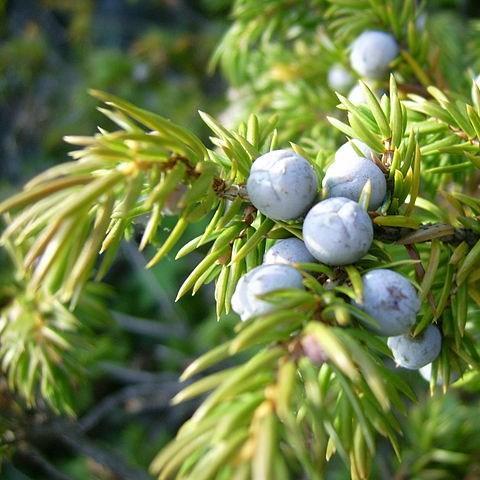
Juniperus communis is a very common juniper that looks like a short plant but grows upright in to a columnar tree.
It grows with pricky needle foliage. Its short height makes it an absolute fit for containers.
But you can also plant them as short verticals right in front of your garden or house to create an enhanced front yard look.
Blueberry Delight Juniper (Botanical name – Juniperus communis ‘AmiDak’)
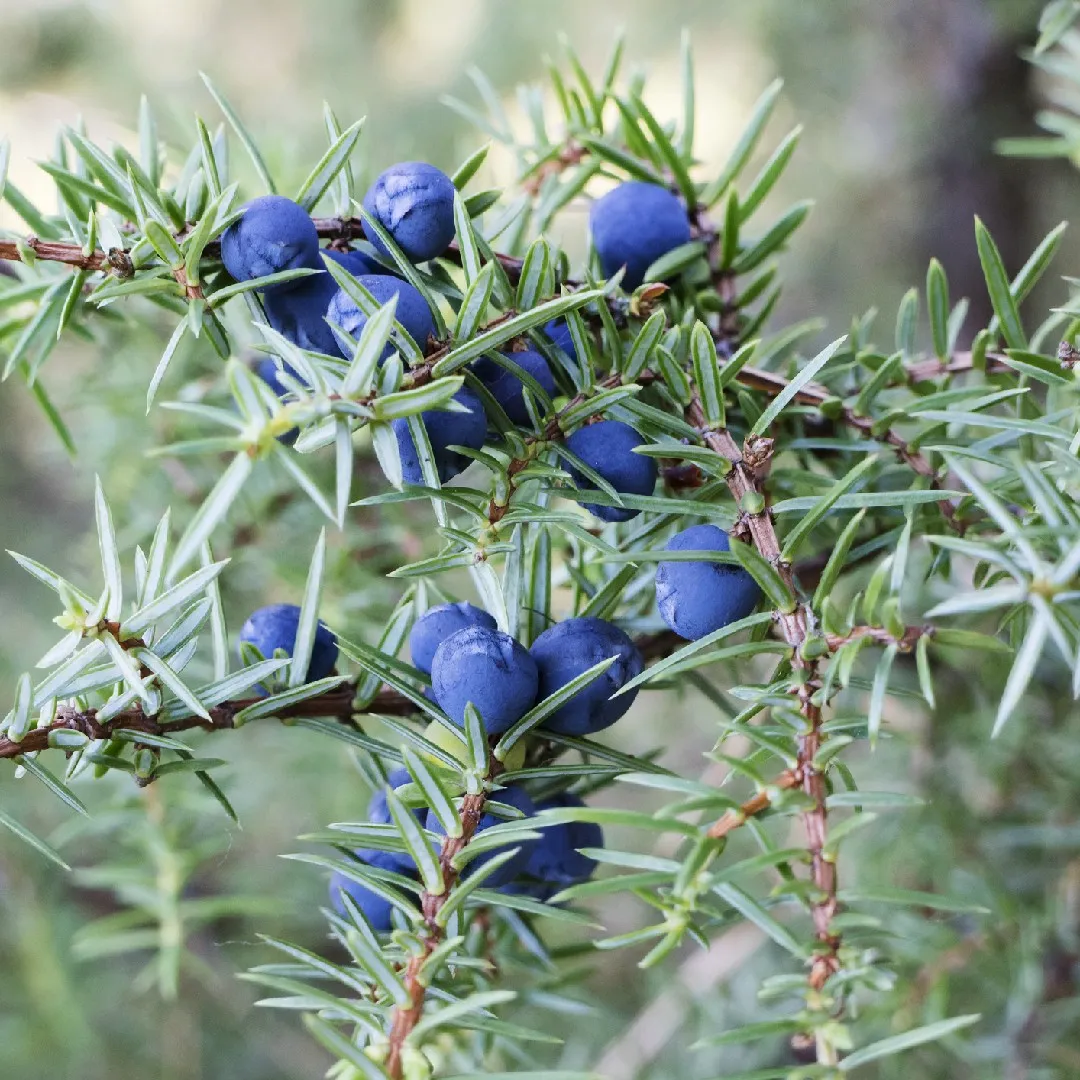
Blueberry delight juniper is a needled evergreen dwarf that is only capable to grow a couple of feet.
That doesn’t matter a lot because it has wide, spreading growth. If you are lucky, you will notice blue cones that is produced by this juniper.
Juniperus horizontalis (Botanical name – ‘Andorra Compacta’)
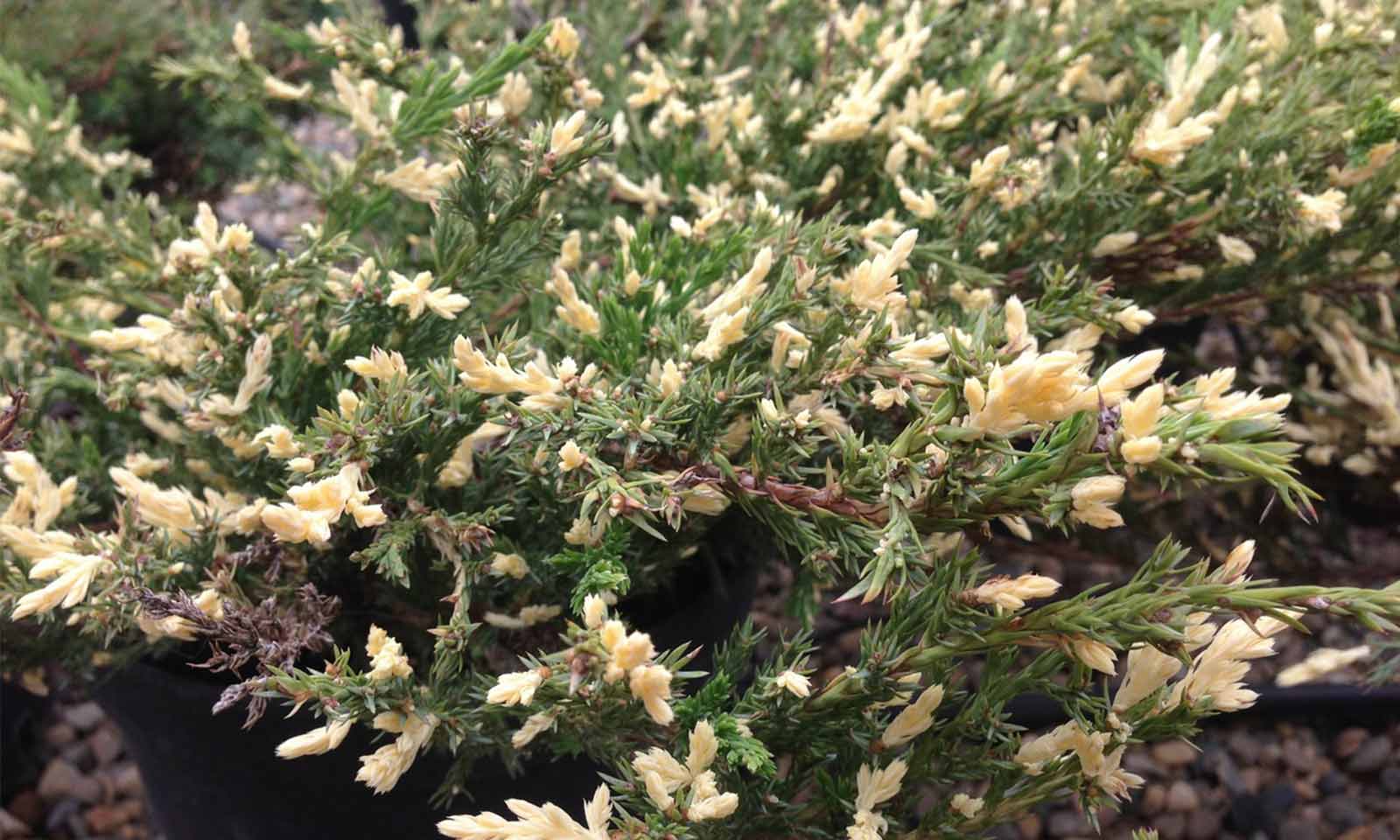
Juniper horizontals is a miniature shrub that can grow in less than a foot in height.
This creeping juniper shrub has soft needle-like leaves with a shade of green and is a widespread by nature.
Dwarf Rhododendrons
We have already seen that Rhododendrons are flowering evergreen shrubs and the colors range from purple to pink, red, orange, white and blue blossoms.
Let’s see how many more popular species it has got.
Compact ‘Hino Crimson’ Azalea (Botanical name – Rhododendron ‘Hino Crimson’)
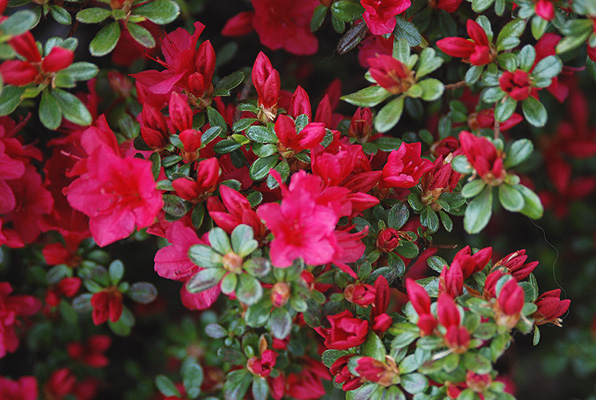
Hino crimson is a beautiful and stunning compact flowering shrub that can grow up to 3 ft tall.
This evergreen dwarf grows into a densely dome-like bush that has the capacity to spread up to 5 ft.
Rhododendron ‘Blue Bells’
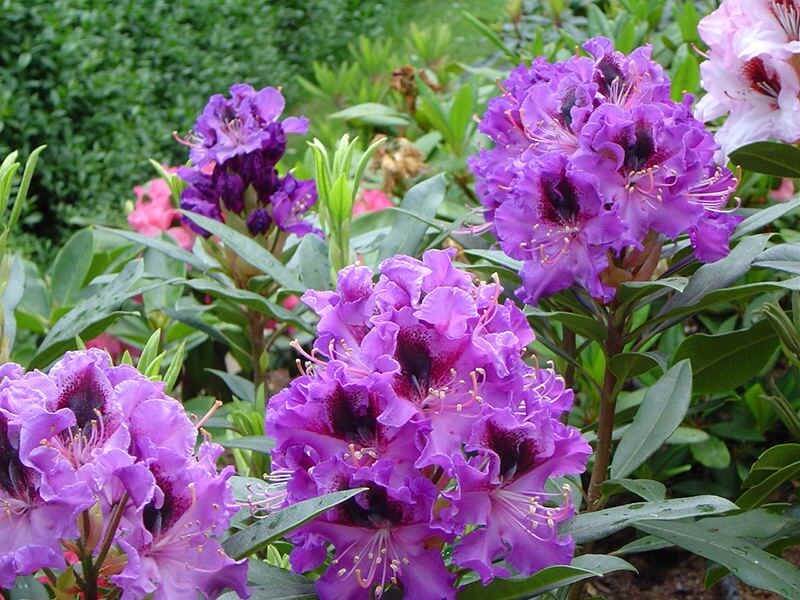
Blue bells are popularly known for their beautiful spring flowers.
This spring flowers grow in a cluster of pink scented flowers covered with dwarf evergreen shrub when it blooms.
The foliage of this shrub is glossy, emerald green that can retain its color throughout the winters. This shrub grows up to 1.80m.
Compact Maximum Rhododendron (Botanical name – Rhododendron ‘Maximum Compacta’)
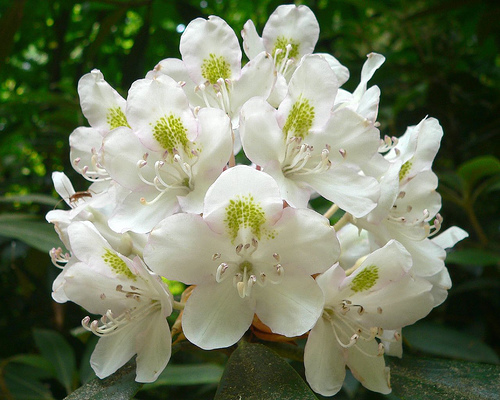
Compact maximum literally goes by its name. It is a small, bushy, and hardy evergreen shrub.
Dark green leaves and beautiful pink flowers blooms in late spring.
You can either use them as a low informal hedge or it can also fit in the category of plant borders.
Dwarf Indica Azalea (Botanical name – Rhododendron Ezriocarpum)
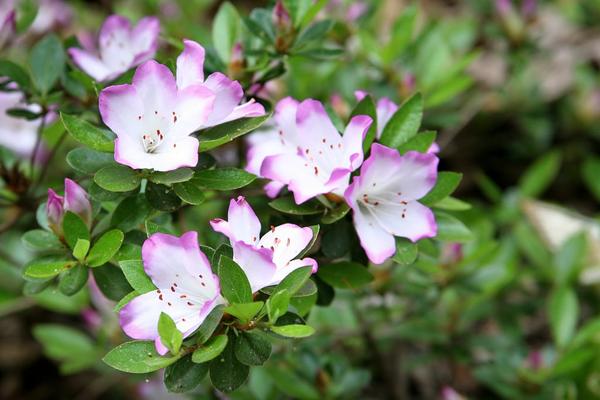
Indica azalea stays evergreen in almost all the seasons and this flowering shrub only grows up to 2ft tall.
You can use this broadleaf rounded bush into shrub borders or as a stunning compact flowering hedge or simply as an accent plant.
What are the Advantages of Dwarf Evergreen Shrubs?
- Compact evergreen shrubs are very low maintenance in nature. This makes them easy to manage.
- To control their height, you do not need to do regular pruning or trimming and there are no leaves in the fall that you will require to clean up.
- The biggest advantage of growing small evergreen shrubs is that you can have the pleasure to grow them in your yards without worrying about their height.
- Evergreen Dwarfs uplifts the look of your garden and you do not have to worry about them for a very long time.
Conclusion
Dwarf evergreen shrubs represent a charming and practical choice for gardeners and landscapers.
Their low-maintenance nature, coupled with the ability to retain their color and structure throughout the year, makes them an invaluable addition to any outdoor space.
From the slow-growing Boxwoods to the versatile Junipers, each variety of dwarf evergreen brings its own unique beauty and functionality.
These shrubs not only enhance the aesthetic appeal of a garden but also serve practical purposes, such as creating hedges or serving as ornamental features.
The beauty of cultivating dwarf evergreens lies in their wide range of varieties, each suited to different landscape needs and preferences.
As we’ve seen, these plants are more than just attractive additions; they are a testament to the resilience and diversity of nature.
By incorporating dwarf evergreens into your garden, you invite a piece of enduring natural beauty that will grace your outdoor space for years to come.
Stay tuned for more such articles.

